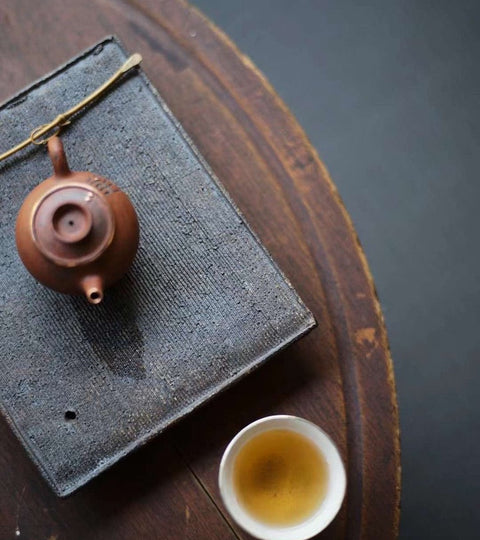Pu'er tea is celebrated for its complex flavors and unique aging process. Whether you have raw (sheng) Pu'er, ripe (shu) Pu'er, cakes, tuocha, or loose leaves, the fundamental storage methods remain similar. If you're aiming to perfectly age your Pu'er, remember these key elements:
-
Protect it from light
-
Avoid excess moisture
-
Ensure adequate ventilation
-
Prevent contaminating aromas
1. Protect from Light
Exposure to light—especially ultraviolet rays—is one of the subtle yet significant threats to aging Pu'er tea. Ultraviolet light accelerates the degradation of volatile compounds responsible for Pu'er's rich aroma and layered flavors. Tea leaves exposed to continuous light lose their nuanced tastes and aromas. Store Pu'er in opaque containers, original cotton-paper wrappers, or kraft paper bags to safeguard its delicate flavors.
2. Manage Humidity Wisely
Humidity plays a critical role in Pu'er tea storage. While moderate humidity aids in the aging process, extremes can be harmful. Excessively high humidity encourages mold growth and microbial contamination, potentially ruining your tea. Conversely, very low humidity dries the leaves, reducing their ability to age and evolve. Aim for balance—ideally, maintain a humidity level between 60% and 70%.
Store Pu'er in a cool, moderately ventilated area, away from high-moisture environments like kitchens or bathrooms. Even a relatively closed room typically provides adequate airflow, ensuring your tea ages gracefully.
3. Ensure Good Ventilation
Pu'er tea should never be stored in completely sealed environments. Proper ventilation helps maintain air circulation, preventing stale or overly humid conditions that can negatively impact the tea's development. A well-ventilated space helps your Pu'er breathe naturally, supporting a harmonious aging process.
4. Avoid Aroma Contamination
Pu'er tea easily absorbs external odors. Keep it away from strongly scented items like incense (especially sandalwood) and cooking areas prone to smoke and oil vapors. These strong scents can infiltrate the tea, permanently altering its natural aroma and taste. Storing your Pu'er separately preserves its authentic character.
Separating Sheng and Shu Pu'er
Raw (sheng) Pu'er and ripe (shu) Pu'er teas are processed differently—sheng undergoes natural oxidation, while shu is artificially fermented. Storing them together risks mixing their distinct flavors, much like blending wines from different grape varieties, diminishing each tea's unique characteristics. Separating them ensures each type matures authentically, offering richer and more nuanced experiences in your cup.
Storage: An Art Form
Storing Pu'er tea effectively involves simple, actionable steps: use opaque containers, maintain moderate humidity, ensure good ventilation, and separate raw and ripe teas. Following these practical guidelines will help your Pu'er tea age beautifully, enhancing your confidence and enjoyment of every cup. Thoughtfully stored Pu'er unfolds with rich, intricate flavors upon brewing, transforming your tea ritual into an exceptional tasting experience.

